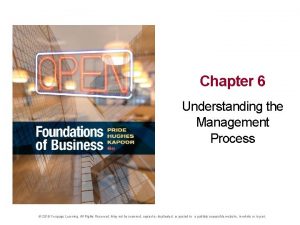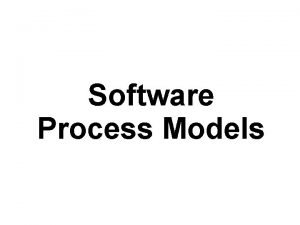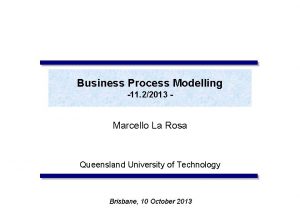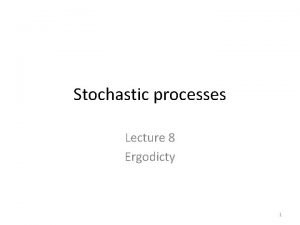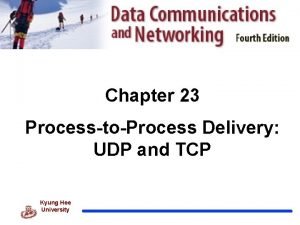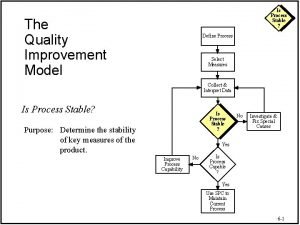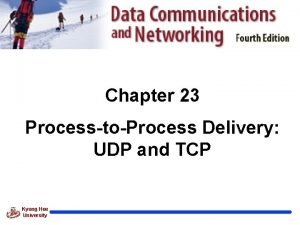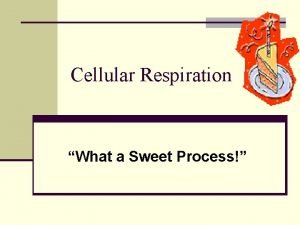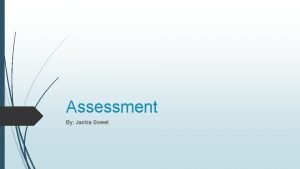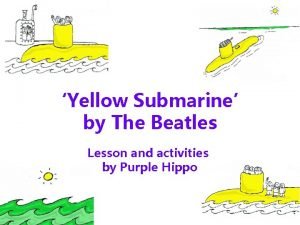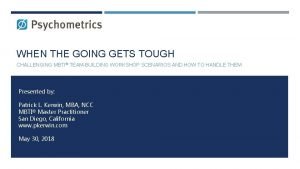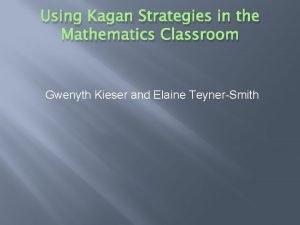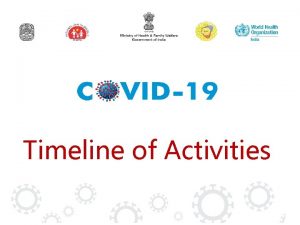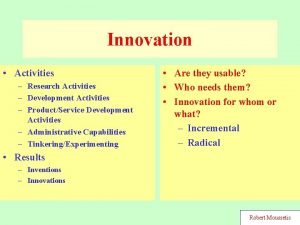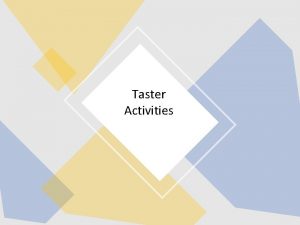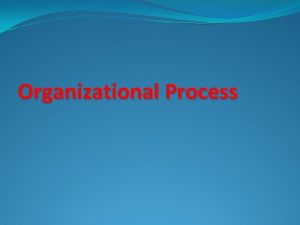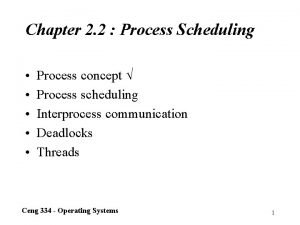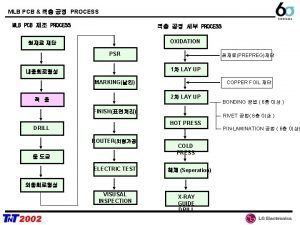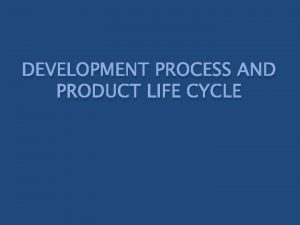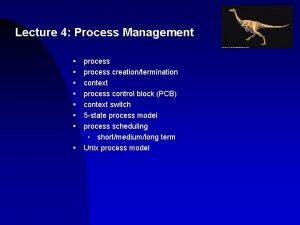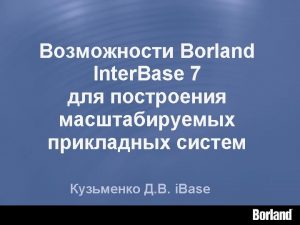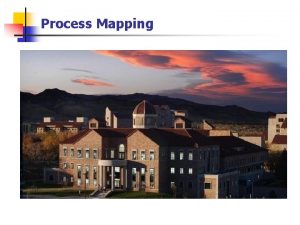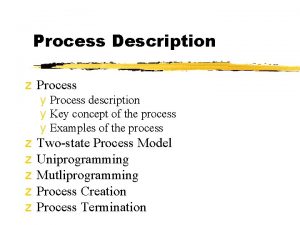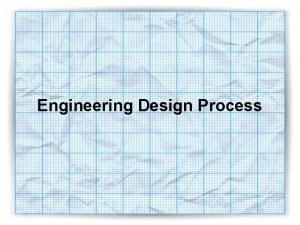Process activities 1 Process activities l l 2





























- Slides: 29

Process activities 1

Process activities l l 2 Software specification Software design and implementation Software validation Software evolution

Software specification l l The process of establishing what services are required and the constraints on the system’s operation and development. Requirements engineering process – – 3 Feasibility study; Requirements elicitation and analysis; Requirements specification; Requirements validation.

Feasibility study l l l 4 Time feasibility. Cost feasibility. Operational feasibility. Technical feasibility. Management feasibility.

The requirements engineering process 5

Software design and implementation l l The process of converting the system specification into an executable system. Software design – l Implementation – l 6 Design a software structure that realises the specification; Translate this structure into an executable program; The activities of design and implementation are closely related and may be inter-leaved.

Design process activities l l l 7 Architectural design Abstract specification Interface design Component design Data structure design Algorithm design

The software design process 8

Structured methods l l l Systematic approaches to developing a software design. The design is usually documented as a set of graphical models. Possible models – – 9 – Object model; Sequence model; State transition model; Structural model; Data-flow model.

Programming and debugging l l l 10 Translating a design into a program and removing errors from that program. Programming is a personal activity - there is no generic programming process. Programmers carry out some program testing to discover faults in the program and remove these faults in the debugging process.

The debugging process 11

Software validation l l l 12 Verification and validation (V & V) is intended to show that a system conforms to its specification and meets the requirements of the system customer. Involves checking and review processes and system testing. System testing involves executing the system with test cases that are derived from the specification of the real data to be processed by the system.

The testing process 13

Testing stages l Component or unit testing – – l System testing – l Testing of the system as a whole. Testing of emergent properties is particularly important. Acceptance testing – 14 Individual components are tested independently; Components may be functions or objects or coherent groupings of these entities. Testing with customer data to check that the system meets the customer’s needs.

Testing phases 15

Software evolution l l l 16 Software is inherently flexible and can change. As requirements change through changing business circumstances, the software that supports the business must also evolve and change. Although there has been a demarcation between development and evolution (maintenance) this is increasingly irrelevant as fewer and fewer systems are completely new.

System evolution 17

The Rational Unified Process l l A modern process model derived from the work on the UML and associated process. Normally described from 3 perspectives – – – 18 A dynamic perspective that shows phases over time; A static perspective that shows process activities; A practice perspective that suggests good practice.

RUP phase model 19

RUP phases l Inception – l Elaboration – l System design, programming and testing. Transition – 20 Develop an understanding of the problem domain and the system architecture. Construction – l Establish the business case for the system. Deploy the system in its operating environment.

RUP good practice l l l 21 Develop software iteratively Manage requirements Use component-based architectures Visually model software Verify software quality Control changes to software

Static workflows 22

Computer-aided software engineering l l Computer-aided software engineering (CASE) is software to support software development and evolution processes. Activity automation – – – 23 Graphical editors for system model development; Data dictionary to manage design entities; Graphical UI builder for user interface construction; Debuggers to support program fault finding; Automated translators to generate new versions of a program.

Case technology l Case technology has led to significant improvements in the software process. However, these are not the order of magnitude improvements that were once predicted – – 24 Software engineering requires creative thought - this is not readily automated; Software engineering is a team activity and, for large projects, much time is spent in team interactions. CASE technology does not really support these.

CASE classification l l Classification helps us understand the different types of CASE tools and their support for process activities. Functional perspective – l Process perspective – l Tools are classified according to process activities that are supported. Integration perspective – 25 Tools are classified according to their specific function. Tools are classified according to their organisation into integrated units.

Functional tool classification 26

Activity-based tool classification 27

CASE integration l Tools – l Workbenches – l Support a process phase such as specification or design, Normally include a number of integrated tools. Environments – 28 Support individual process tasks such as design consistency checking, text editing, etc. Support all or a substantial part of an entire software process. Normally include several integrated workbenches.

Tools, workbenches, environments 29
 Operating activities vs investing activities
Operating activities vs investing activities How do you find these activities
How do you find these activities Primary and support activities
Primary and support activities Definition of primary activities
Definition of primary activities Chapter 6 understanding the management process
Chapter 6 understanding the management process Generic software process model
Generic software process model Olecranon process vs fossa
Olecranon process vs fossa Substantive vs procedural due process
Substantive vs procedural due process Process hierarchy in process management
Process hierarchy in process management Autocorrelation function properties
Autocorrelation function properties What is process to process delivery
What is process to process delivery Condylar and coronoid process of mandible
Condylar and coronoid process of mandible Process capability
Process capability Process-to-process delivery
Process-to-process delivery Sweet process review
Sweet process review Process street vs sweet process
Process street vs sweet process Youth activities counselor disney cruise line
Youth activities counselor disney cruise line Yellow submarine worksheet
Yellow submarine worksheet Curious george mbti
Curious george mbti Lancashire outdoor activities
Lancashire outdoor activities Cube utilization and accessibility
Cube utilization and accessibility Kagan strategies for math
Kagan strategies for math April school activities
April school activities Bank activities
Bank activities Tuesday morning with morrie
Tuesday morning with morrie Engagement activities for virtual meetings
Engagement activities for virtual meetings Chronology of activities
Chronology of activities Difference between hobbies and interests
Difference between hobbies and interests Basic revenue cycle activities
Basic revenue cycle activities The most dangerous game activities
The most dangerous game activities




